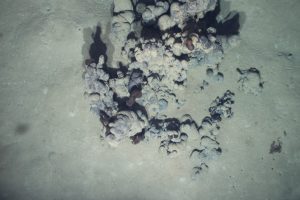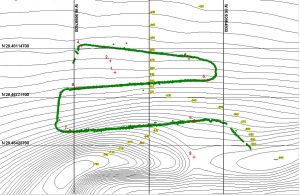Working Smart: Deep-C and NOAA Collaboration Improves Gulf Oil Research
– November 8, 2012
“Highly successful” is how Chief Scientist Ian MacDonald described his recent research cruise on the RV Weatherbird II to identify natural oil seeps to use as control sites as part of a larger effort to study the effects of oil and gas in the deep sea environment.
Dr. MacDonald, oceanographer and professor at Florida State University attributes this success to collaboration with NOAA: “Having the high-resolution bathymetry data that Okeanos Explorer collected during its Gulf of Mexico surveys has lifted our ability to work smart in the DeSoto Canyon by an order of magnitude or more.”
Dr. MacDonald’s team focused on collecting deep-sea bottom images with a fiber-optic drift camera system (MILET) in a limited time span of one hour over an area that was difficult to maneuver remotely. However, they processed and analyzed the bathymetric data from the NOAA Ocean Exploration Program, revised their sampling strategy, and successfully carried out their mission.
“Because we had the bathymetric data set,” Dr. MacDonald explained, “we felt confident flying the sled into the side of the seep mount which rose steeply about 400 meters above the surroundings.” This effort resulted in remarkable imagery as Dr. MacDonald continued, “This is the first time asphalt volcanism has been observed in the eastern Gulf of Mexico, to my knowledge.”
While onboard the RV Weatherbird II, Dr. MacDonald blogged about this exciting research as it was happening: “The Okeanus Explorer had detected gas bubbles here in 2011, so we thought there might be some active venting. Lo and behold, as we maneuvered MILET up the flanks of a mound we call Peanut Hill, we spied several patches of bacterial mats and an unmistakable lump of natural asphalt. Bingo!”
Dr. MacDonald anticipates additional successes collaborating with NOAA: “Our continuing efforts in the Deep-C project, and related efforts by other consortia, will continue to rely on the data that Okeanos Explorer collected. . .There remains much to explore and discover in the Gulf of Mexico, but the ocean exploration efforts truly blazed a path where others can follow.”
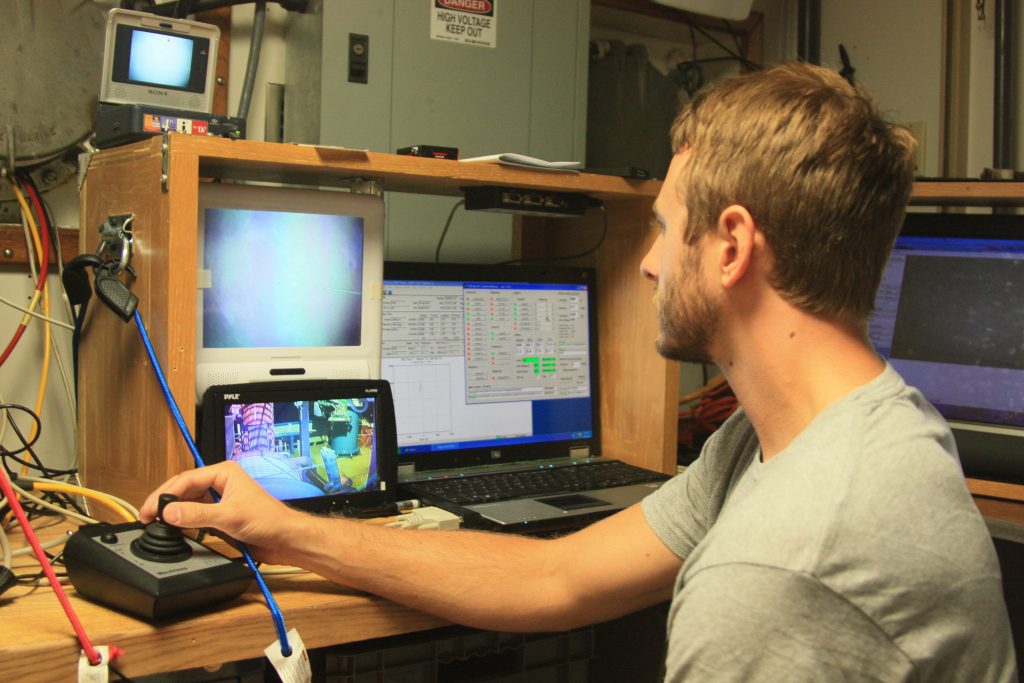
On the RV Weatherbird II, lab technician Chris Malinowski flies the MILET 2-3 meters above sea floor bottom by reeling cable in or out from the winch. (Photo credit: Ian MacDonald)
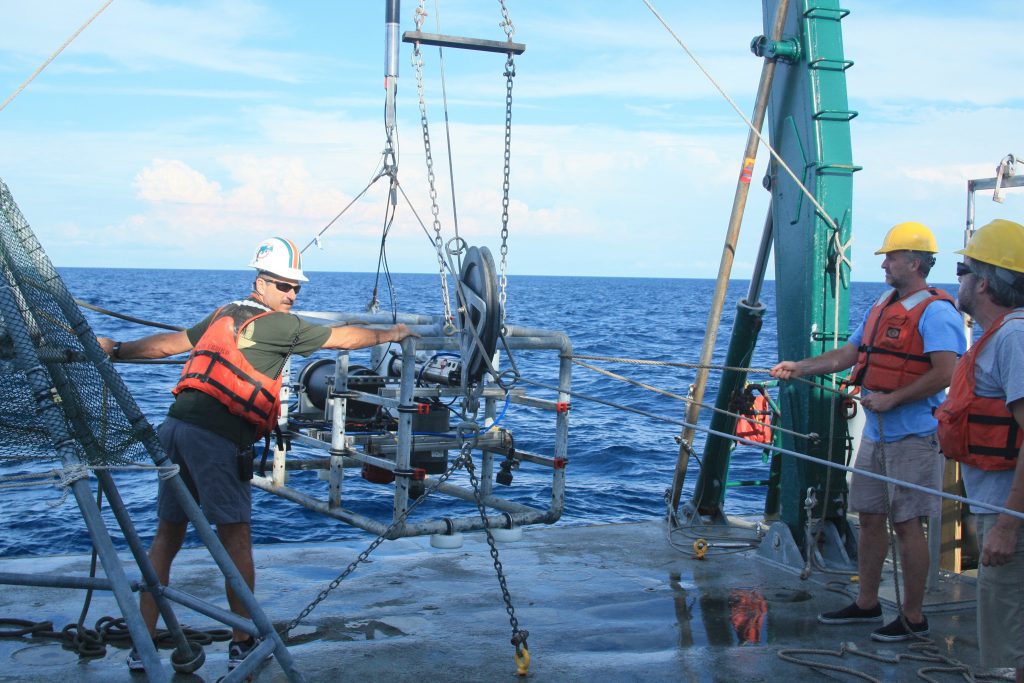
MILET goes over the stern of the RV Weatherbird II to start a deep-sea floor survey. (Photo credit: Ian MacDonald)
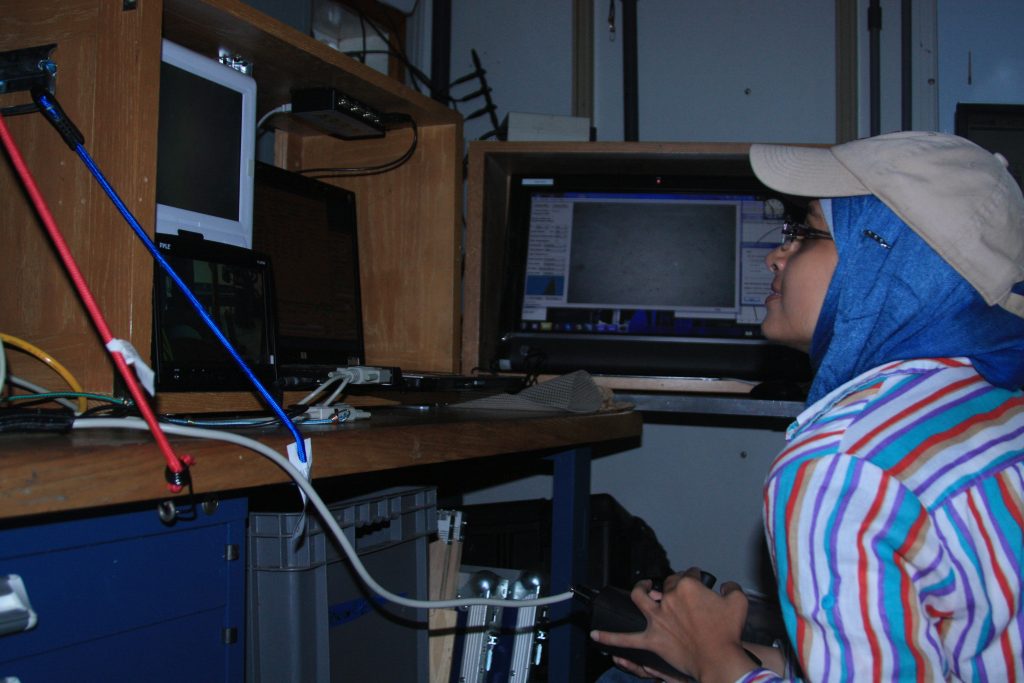
From the RV Weatherbird II, Ph.D. student Samira Danishgar Asl flies the MILET platform, which is hovering 2 meters above the sea bottom at the end of 2,500 meter cable. (Photo credit: Ian MacDonald)
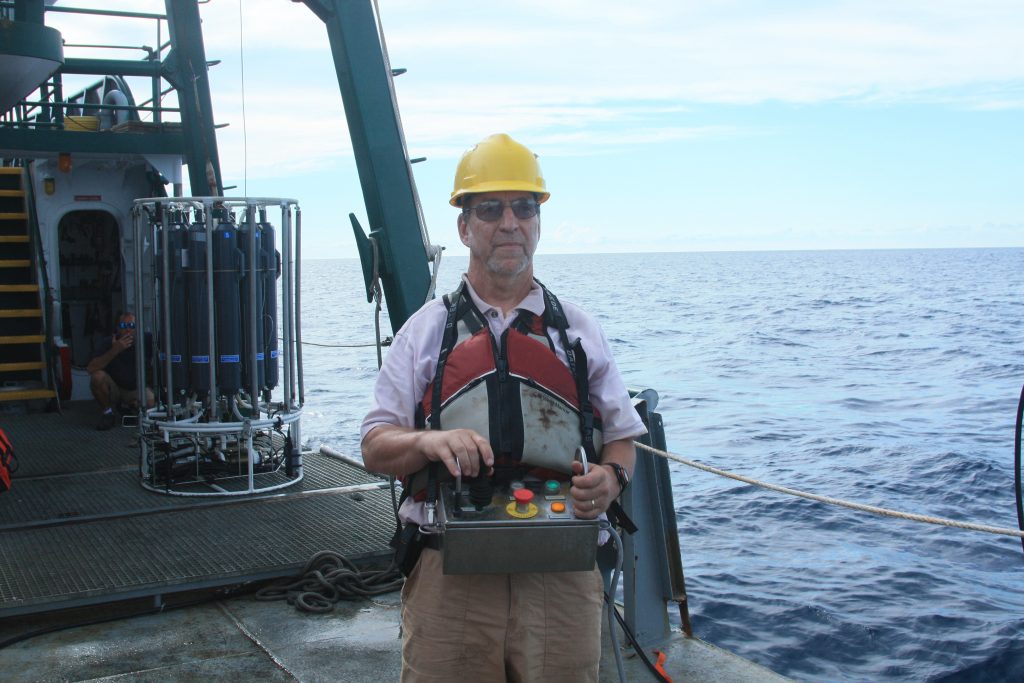
Dr. Ian MacDonald controls the winch during the launch of MILET from the RV Weatherbird II. (Photo credit: Bill Howarth)
The research of the Deep-C Consortium is made possible by a grant from BP/The Gulf of Mexico Research Initiative. The GoMRI is a 10-year, $500 million independent research program established by an agreement between BP and the Gulf of Mexico Alliance to study the effects of the Deepwater Horizon incident and the potential associated impact of this and similar incidents on the environment and public health.
© Copyright 2010- 2017 Gulf of Mexico Research Initiative (GoMRI) – All Rights Reserved. Redistribution is encouraged with acknowledgement to the Gulf of Mexico Research Initiative (GoMRI). Please credit images and/or videos as done in each article. Questions? Contact web-content editor Nilde “Maggie” Dannreuther, Northern Gulf Institute, Mississippi State University (maggied@ngi.msstate.edu).

